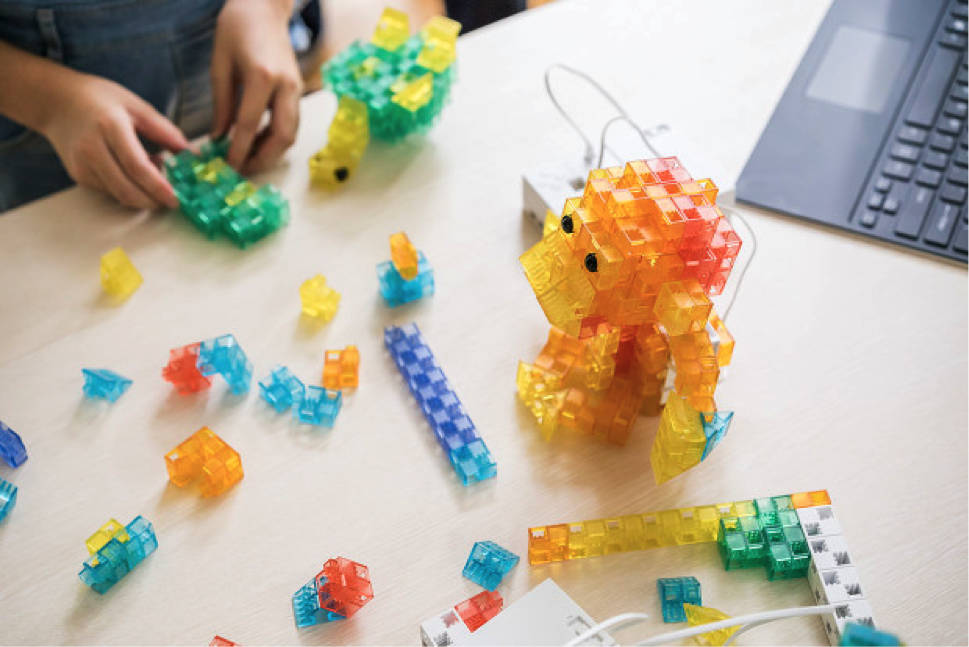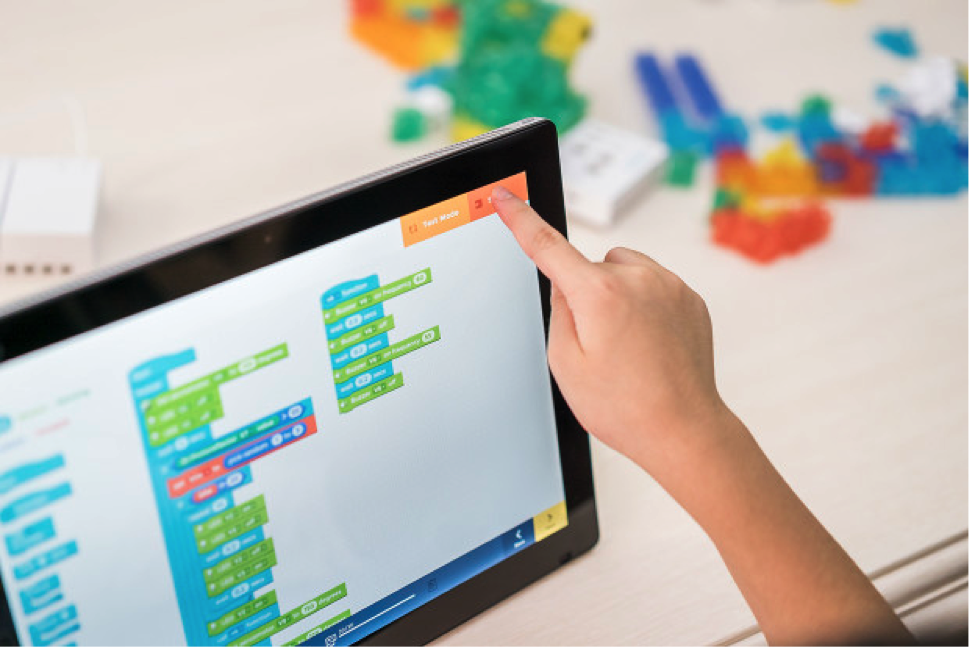
How can educators make STEM subjects more interesting for kids? How can kids find a hands on and engaging way to learn about robotics and programming? These were the questions the team at Sony set out to answer as they developed KOOV, an educational coding, robotics and design kit for young learners. Kids start by building basic robot structures with colorful KOOV blocks, before adding sensors, actuators and, importantly, code, to make their creations come to life. We sat down with Tim McGregor, the Product Marketing Manager at Sony Global Education, to learn more about how Sony is making STEM accessible to all children.
How did you come up with the idea for this?
The team at Sony Global Education felt they could bring something special to this space and the input from Sony’s top engineers and designers fed directly into the educational parts of the accompanying KOOV app.
We’re excited to provide something that isn’t just fun to use, but provides kids with practical thinking tools they can use when overcoming design or coding problems in the future.
How do you typically bring a product to market and why did you decide to turn to crowdfunding to do this instead?
KOOV was released in Japan and China in February this year, but before launching in the USA we wanted to make the product even better. Indiegogo gives us this opportunity – to build a community of users who can provide direct feedback to make KOOV an even better match for them. We have time between now and the shipping date for our backers to make some meaningful input into the development of our KOOV app.

Who are the team members of your project? What’s their story?
The KOOV team originally came from a project within Sony Computer Science Laboratories, a hotbed of ideas from within Sony. Primarily engineers and designers, they felt that they could leverage their knowledge and thinking strategies in ways that kids could use to tackle issues they come across in school and everyday life. KOOV is really an example of that coming to life in physical form. In addition to being fun to play with and looking cool, the software really helps to provide young learners with a toolkit of skills that will be useful for them in years to come, both in school and out.
Do you anticipate reaching new consumers through your campaign? Has this helped you better understand your customer?
The USA has some of the most fantastic STEM education programs around at the moment, with passionate teachers and parents alike helping to get kids involved. We hope we can reach out to people in this space to help bring additions to KOOV that we may have missed out in Japan and China.

Is there a need on the market for a product like this? Why? What surprised you most about crowdfunding?
We feel that KOOV fills a space in the market by combining design alongside coding and robotics. The in-depth educational course also helps ensure that children don’t just build robots, but really understand each and every part of their creations, from sensors to motors and LEDs.
What are the plans for after the campaign?
Once the campaign ends we’re really excited about engaging with our backers to make KOOV into something even more compelling. We hope that our backers can help make some real differences to the final product once it ships in November.
Why did you decide to fund on Indiegogo?
Indiegogo provides a fantastic platform to showcase what exactly we have to offer, as well as features to build a sense of community with our backers as the campaign progresses. We see this as being a major factor in why we decided to take this route.
Interested in learning more about KOOV? Check out Sony’s Indiegogo campaign.


